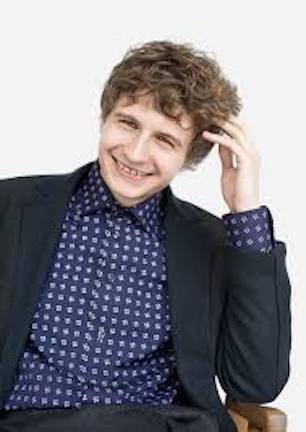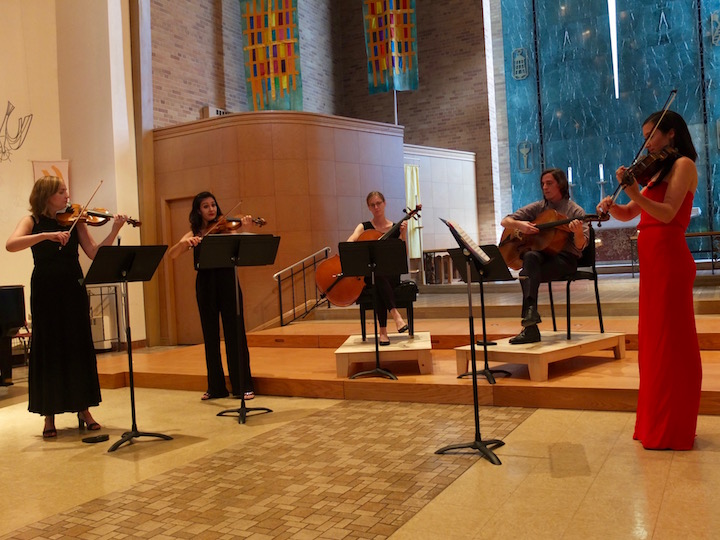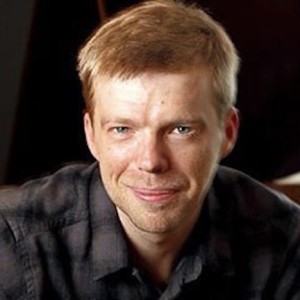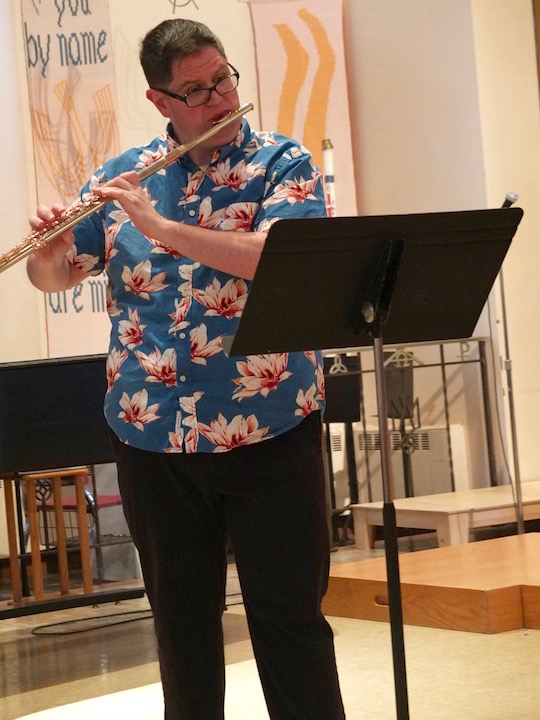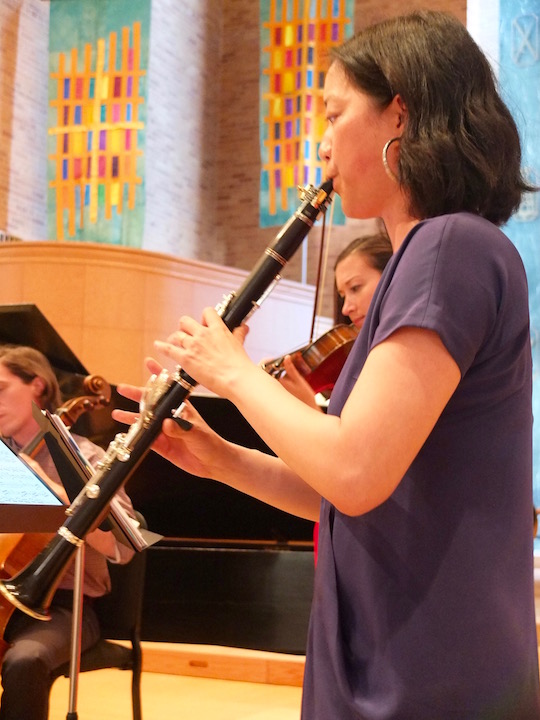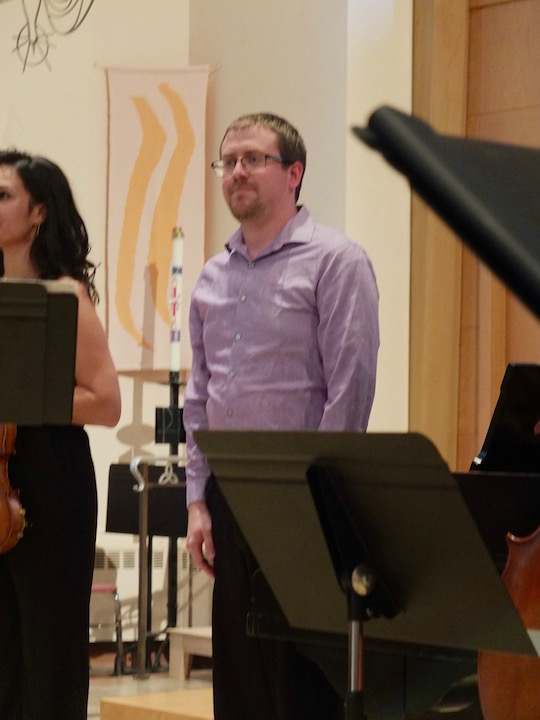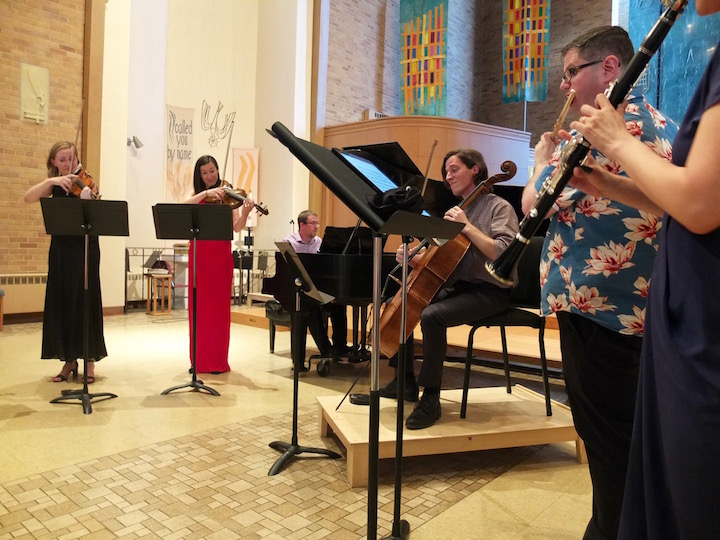The Well-Tempered Ear
Is impromptuing the impromptu ok?
2 Comments
PLEASE HELP THE EAR. IF YOU LIKE A CERTAIN BLOG POST, SPREAD THE WORD. FORWARD A LINK TO IT OR, SHARE IT or TAG IT (not just “Like” it) ON FACEBOOK. Performers can use the extra exposure to draw potential audience members to an event. And you might even attract new readers and subscribers to the blog.
By Jacob Stockinger
Recently, The Ear heard an unusual version of the very familiar Fantaisie-Impromptu for solo piano by Chopin.
It was played by the 35-year-old, prize-winning Russian pianist Pavel Kolesnikov (below). You can hear his performance in the YouTube video at the bottom.
What made it unusual is that the pianist took liberties and added passing notes or runs and a melodic overlay to part of it.
It seemed odd at first.
Why mess with Chopin, who was such a meticulous crafter of beauty?
But when you think about it, it makes a certain sense.
It is, after all, an impromptu. And an impromptu is based on and suggests improvisation.
So why not impromptu the impromptu? Why not add some extra spontaneity or variation, since many impromptus take the form of a theme with variations and elaborations.
These days performers are even expected to elaborate the Baroque repertoire, especially Bach and Handel. And it is becoming standard practice to do so with Mozart’s piano sonatas and concertos.
Now the Fantaisie-Impromptu is by far the most popular of Chopin’s four impromptus, no doubt in part because its lovely middle section melody inspired the classic Vaudeville pop song “I’m Always Chasing Rainbows.”
But the Fantaisie-Impromptu, the last composed, is The Ear’s least favorite of the four impromptus that Chopin wrote. And Chopin apparently didn’t like it much either. He wanted it to remain unpublished and destroyed.
It made me want to know: What might the same pianist do with the other three great impromptus by Chopin?
Or the famous ones by Schubert and the less famous ones by Fauré?
Listen to the 5-minute performance and tell The Ear what you think of the ornamented version that Kolesnikov plays?
Which one of four is your favorite Chopin impromptu?
What impromptus by Schubert and Fauré do you especially like? Would changing the score work with them?
What other impromptus by other composers do you suggest listening to and playing — and perhaps even ornamenting?
The Ear wants to hear.
Tags: #BlogPost, #BlogPosting, #FacebookPost, #FacebookPosting, #Prize-Winning, #YouTubevideo, Apple, Arts, audience, Bach, Baroque, beauty, Beethoven, blog, Cello, change, Chopin, choral music, Classical music, composer, Concert, concerto, Craft, Early music, elaboration, eloaborate, Facebook, famous, Fantaisie-Impromptu, Faure, favorite, Google, Google Alert, great, Handel, hear, impromptu, improvisation, improvise, Jacob Stockinger, Johann Sebastian Bach, kliberty, liberties, link, listen, Ludwig van Beethoven, Madison, melody, mess, Mozart, Music, odd, opera, Orchestra, ornament, ornamentation, OS, Pavel Kolesnikov, performance, Pianist, Piano, play, pop music, popular, publish, repertoire, repertory, Russia, Russian, Schubert, score, sense, share, solo]performer, Sonata, spontaneity, symphony, tag, The Ear, theme, think, United States, University of Wisconsin-Madison School of Music, University of Wisconsin–Madison, unpublished, variations, Vaudeville, version, Viola, Violin, vocal music, want, Wisconsin, Wolfgang Amadeus Mozart, you, YouTube
Classical music: The Willy Street Chamber Players conclude this summer season on such a high note that one already hungers for next summer
Leave a Comment
By Jacob Stockinger
Here is a special posting, a review written by frequent guest critic and writer for this blog, John W. Barker. Barker (below) is an emeritus professor of Medieval history at the University of Wisconsin-Madison. He also is a well-known classical music critic who writes for Isthmus and the American Record Guide, and who hosts an early music show once a month on Sunday morning on WORT-FM 89.9 FM. For years, he served on the Board of Advisors for the Madison Early Music Festival and frequently gives pre-concert lectures in Madison.
By John W. Barker
At Immanuel Lutheran Church last Friday night, the Willy Street Chamber Players ended the 2018 summer season – their fourth — with a concert full of fascinating variety.
Four works were performed, each introduced by one of the players. Personnel shifted according to the scorings.
To begin, a core group of the organization (below, from left) — violinists Eleanor Bartsch and Paran Amirinazari, cellists Lindsay Crabb and Mark Bridges, and violist Beth Larson — played Luigi Boccherini’s Cello Quintet in C major (G. 324), which has the Italian title translatable as “Night Music of the Streets of Madrid.” (The piece, which has military or martial aspects to it, was featured in the soundtrack to the popular film “Master and Commander,” which you can hear in the YouTube video at the bottom.)
Typical of the composer’s prolific writing for string quintets, it is unique in offering in its seven movements a dusk-to-dawn evocation of Madrid’s street life in Boccherini’s day. This delightful work was performed with relish.
Next came a contemporary work by American composer Andrew Norman (below top). Written in his 20s, Night Screens (2002),for flute and string quartet, is a playful work inspired by the asymmetrical stained glass windows designed by architect Frank Lloyd Wright.
The music is quite tonal, but very episodic in its succession of tempos and rhythms. For this work, Amirinazari, Larson and Crabb were joined by a friend of the composer, flutist Timothy Hagen (below), now a faculty member of the UW-Madison’s Mead Witter School of Music.
Rarely heard in concert, but a really fascinating novelty is Sergei Prokofiev’s Overture on Hebrew Themes, Op. 34. This was composed in 1919, during the composer’s stay in the U.S. It is based on two melodies whose actual Jewish origins are in doubt, but their juxtaposition and elaboration are fascinating to follow.
The colorful scoring is for clarinet, piano, and string quartet, so this drew other guest artists, Alicia Lee (below top) also of the UW faculty, and pianist Thomas Kasdorf (below bottom) to join Bartsch, Amirinazari, Larson and Bridges.
Finally came a rare opportunity to encounter Johann Strauss II collaborating with Arnold Schoenberg, or rather vice-versa. For a fund-raising concert on behalf of his radical atonal ensemble in Vienna in 1925, Schoenberg made a chamber arrangement of the great waltz master’s Kaiser-Walzer or “Emperor Waltz.”
He scored it for flute, clarinet, piano and string quartet — perfectly allowing seven of the eight performers (less Crabb) to offer a triumphant grand finale. Even in such a lean and reduced format, Schoenberg faithfully conveyed Strauss’s melodic genius, and brought the large audience enthusiastically to its feet.
The Willys continue to match great enterprise in programming with superb artistry in playing, all in a summer season that leaves us hungering for the next one.
Tags: #AliciaLee, #AmericanComposer, #AmericanRecordGuide, #AndrewNorman, #ArnoldSchoenberg, #AtonalMusic, #BethLarson, #BlogPosting, #CelloQuintet, #ChristianChurch, #ChristianReligion, #ContemporaryComposer, #ContemporaryMusic, #EleanorBartsch, #EmeritusProfessor, #FacultyMember, #FilmMusic, #FilmScore, #FilmSoundtrack, #FluteMusic, #FrankLloydWright, #Fridaynight, #GrandFinale, #ImmanuelLutheranChurch, #IsthmusNewspaper, #JohannStrauss, #JohnW.Barker, #LindsayCrabb, #LivingComposer, #LuigiBoccherini, #LutheranChurch, #LutheranReligion, #MadisonEarlyMusicFestival, #MadridSpain, #MarkBridges, #MartialMusic, #MasterandCommander, #MeadWitterSchoolofMusic, #MedievalHistory, #MilitaryMusic, #MovieMusic, #MovieScore, #MovieSoundtrack, #MusicReview, #NewMusic, #NightMusic, #OvertureonHebrewThemes, #ParanAmirinazari, #PianoMusic, #RadioHost, #RadioShow, #RussellCrowe, #SergeiProkofiev, #StainedGlass, #StreetLife, #StringQuartet, #StringQuintet, #SummerSeason, #TheWillys, #ThomasKasdorf, #TimothyHagen, #TonalMusic, #UnitedStates, #UniversityofWisconsin, #UniversityofWisconsin-Madison, #ViennaAustria, #WillyStreetChamberPlayers, #WORT-FM89.9, #YouTubevideo, American, American Record Guide, Andrew Norman, architect, artistry, asymmetrical, atonal, audience, Austria, Beth Larson, blog, Boccherini, cellist, Cello, clarinet, clarinetist, classicalmusic, Concert, critic, dawn, delightful, dusk, Early music, earlymusic, elaboration, Eleanor Bartsch, emeritus, Emperor, episode, episodic, faculty, fascinating, feet, film, flute, flutist, format, Frank Lloyd Wright, Friday, friend, genius, guest, Hebrew, History, Immanuel Lutheran Church, inspiration, inspired, Isthmus, Italian, Jewish, John W. Barker, juxtaposition, lecture, Lindsay Crabb, Luigi Boccherini, Madison Early Music Festival, Madrid, Mark Bridges, martial, Master and Commander, Medieval, melodic, melody, member, MEMF, military, movie, Music, Music of Spain, New Music, night, night music, novelty, origin, Overture, Paran Amirinazari, perform, Piano, playful, playing, popular, post, posting, professor, programming, Prokofiev, prolific, quintet, relish, review, rhythm, Russell Crowe, score, Sergei Prokofiev, soundtrack, Spain, stained glass, street, String quartet, summer, superb, Tempo, The Willys, theme, tonal, translate, triumphant, U.S., United States, variety, video, Vienna, Viola, Violin, violinist, violist, Waltz, Willy Street Chamber Players, window, work, WORT-FM 89.9, Writer
Classical music: The UW-Madison’s Pro Arte Quartet delivers a perfect program of superb music by Haydn, Mozart and Schubert
Leave a Comment
By Jacob Stockinger
Here is a special posting, a review written by frequent guest critic and writer for this blog, John W. Barker. Barker (below) is an emeritus professor of Medieval history at the University of Wisconsin-Madison. He also is a well-known classical music critic who writes for Isthmus and the American Record Guide, and who hosts an early music show once a month on Sunday morning on WORT-FM 89.9 FM. For years, he served on the Board of Advisors for the Madison Early Music Festival and frequently gives pre-concert lectures in Madison.
By John W. Barker
While snow may have restricted the audience attending the Pro Arte Quartet (below, in a photo by Rick Langer) on Saturday night, those who came were amply rewarded with a virtually perfect program of superb music.
The program brought together three Austrian works, two by those Classical-era titans, Franz Joseph Haydn and Wolfgang Amadeus Mozart, and the third by the Austrian early Romantic Franz Schubert.
The combination of the first two was particularly stimulating, an opportunity to reckon how different from each other were these composers who are so often bracketed together.
The E-flat Quartet is No. 3 in the Op. 50 set that some commentators have viewed as the response by Haydn (below) to the set of six quartets that Mozart had recently published in Haydn’s honor.
Deliberately, Haydn chose to avoid matching Mozart’s lyricism and rich imagination, turning instead to statements of strength in austere textures.
Composed in 1790, a year before his death and only three years after the Haydn work, the Quartet in B-flat, K. 589, by Mozart (below) was his penultimate quartet, part of a series to be written for the King of Prussia who played the cello, which is featured prominently in the quartet.
Here we have a Mozartian style that is expansive and exploratory. Amid music of great lyric beauty and even vivacity, we have a Menuetto third movement whose Trio, or midsection, is remarkably dark and ambiguous. (You can hear a period-instrument performance of the third movement in the YouTube video at the bottom)
The Pro Arte players brought out the individuality of the two different styles quite beautifully. To my ears, the viola lines were delivered with notable strength and color by Sally Chisholm.
The final work, and the longest, was one of Schubert’s amazing late quartets. The No. 13 in A minor, D. 804), from 1824 is known as the “Rosamunde” Quartet because the second movement is the elaboration by Schubert (below) of the lovely melody in the well-known interlude in his incidental music for the play of that title.
Despite a somewhat moody first movement, the work as a whole is suffused with Schubert’s very special, very personal lyricism. Analyses of it can be instructive, but ultimately this remains music for the soul, not just the brain, I think.
The Pro Arte understands that well, and gave a generous demonstration of its beauties.
It proved such a wonderful concert, for which we can only give warm thanks to the UW-Madison’s Mead-Witter School of Music where the Pro Arte Quartet has been an artist-in-residence since World War II.
Tags: #ChamberMusic, #FranzJosephHaydn, #FranzSchubert, #MadisonEarlyMusicFestival, #MeadWitterSchoolofMusic, #ProArteQuartet, #SecondWorldWar, #StringQuartet, #UniversityofWisconsin-Madison, #WorldWarII, amazing, ambiguous, American Record Guide, analyses, analysis, artist, artist-in-residence, Arts, austere, Austria, Austrian, beauty, bracket, Brain, Cello, Chamber music, Classical, Classical music, color, composer, Concert, critic, dark, death, demonstration, drama, elaboration, emeritus, expansive, exploratory, fina, Franz Schubert, generous, Haydn, historically informed performance practices, History, honor, imagination, incidental, incidental music, individuality, instrument, interlude, Isthmus, Jacob Stockinger, John W. Barker, King, late, lecture, line, long, longest, lovely, lyrical, lyricism, Madison, Medieval, melody, minuet, moody, morning, Mozart, Music, opportunity, perfect, period, period-instrument, personal, play, Pro Arte Quartet, professor, program, Prussia, residence, response, reward, Romantic, Rosamunde, Saturday night, section, set, snow, soul, statment, strength, String quartet, style, Sunday, texture, thanks, Titan, trio, United States, University of Wisconsin-Madison School of Music, University of Wisconsin–Madison, Viola, Violin, vivacity, warm, Wisconsin, Wolfgang Amadeus Mozart, World War II, WORT-FM 89.9, YouTube
- June 2024
- May 2024
- April 2024
- March 2024
- February 2024
- January 2024
- December 2023
- November 2023
- October 2023
- September 2023
- August 2023
- July 2023
- June 2023
- May 2023
- April 2023
- March 2023
- February 2023
- January 2023
- December 2022
- October 2022
- September 2022
- June 2022
- May 2022
- April 2022
- March 2022
- July 2021
- June 2021
- May 2021
- April 2021
- March 2021
- February 2021
- January 2021
- December 2020
- November 2020
- October 2020
- September 2020
- August 2020
- July 2020
- June 2020
- May 2020
- April 2020
- March 2020
- February 2020
- January 2020
- December 2019
- November 2019
- October 2019
- September 2019
- August 2019
- July 2019
- June 2019
- May 2019
- April 2019
- March 2019
- February 2019
- January 2019
- December 2018
- November 2018
- October 2018
- September 2018
- August 2018
- July 2018
- June 2018
- May 2018
- April 2018
- March 2018
- February 2018
- January 2018
- December 2017
- November 2017
- October 2017
- September 2017
- August 2017
- July 2017
- June 2017
- May 2017
- April 2017
- March 2017
- February 2017
- January 2017
- December 2016
- November 2016
- October 2016
- September 2016
- August 2016
- July 2016
- June 2016
- May 2016
- April 2016
- March 2016
- February 2016
- January 2016
- December 2015
- November 2015
- October 2015
- September 2015
- August 2015
- July 2015
- June 2015
- May 2015
- April 2015
- March 2015
- February 2015
- January 2015
- December 2014
- November 2014
- October 2014
- September 2014
- August 2014
- July 2014
- June 2014
- May 2014
- April 2014
- March 2014
- February 2014
- January 2014
- December 2013
- November 2013
- October 2013
- September 2013
- August 2013
- July 2013
- June 2013
- May 2013
- April 2013
- March 2013
- February 2013
- January 2013
- December 2012
- November 2012
- October 2012
- September 2012
- August 2012
- July 2012
- June 2012
- May 2012
- April 2012
- March 2012
- February 2012
- January 2012
- December 2011
- November 2011
- October 2011
- September 2011
- August 2011
- July 2011
- June 2011
- May 2011
- April 2011
- March 2011
- February 2011
- January 2011
- December 2010
- November 2010
- October 2010
- September 2010
- August 2010
- July 2010
- June 2010
- May 2010
- April 2010
- March 2010
- February 2010
- January 2010
- December 2009
- November 2009
- October 2009
- September 2009
- August 2009
Archives
- 2,495,338 hits
Blog Stats
Recent Comments
Tags
#BlogPost #BlogPosting #ChamberMusic #FacebookPost #FacebookPosting #MeadWitterSchoolofMusic #TheEar #UniversityofWisconsin-Madison #YouTubevideo Arts audience Bach Baroque Beethoven blog Cello Chamber music choral music Classical music Compact Disc composer Concert concerto conductor Early music Facebook forward Franz Schubert George Frideric Handel Jacob Stockinger Johannes Brahms Johann Sebastian Bach John DeMain like link Ludwig van Beethoven Madison Madison Opera Madison Symphony Orchestra Mead Witter School of Music Mozart Music New Music New York City NPR opera Orchestra Overture Center performer Pianist Piano post posting program share singer Sonata song soprano String quartet Student symphony tag The Ear United States University of Wisconsin-Madison School of Music University of Wisconsin–Madison Viola Violin vocal music Wisconsin Wisconsin Chamber Orchestra wisconsin public radio Wolfgang Amadeus Mozart YouTube